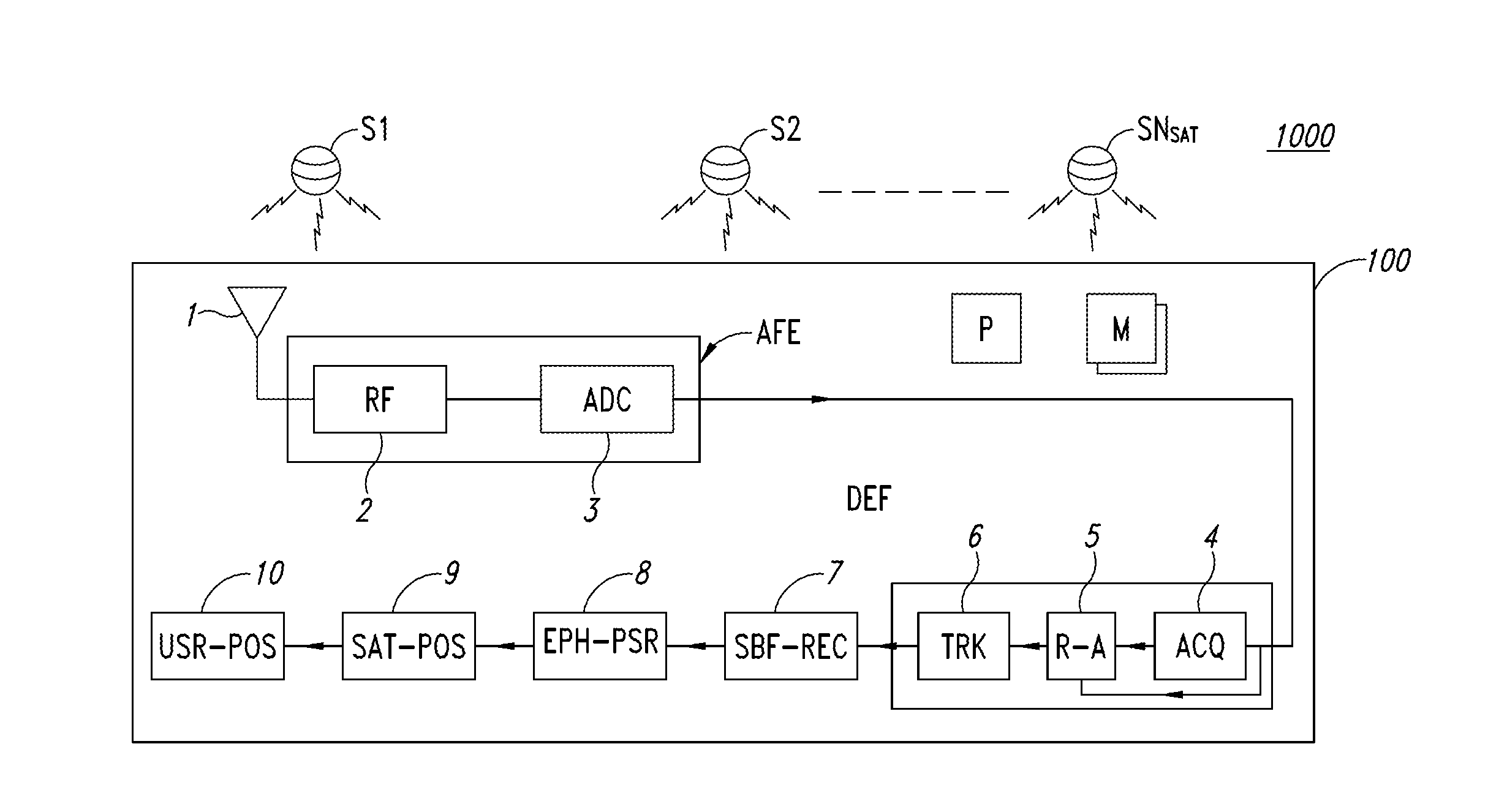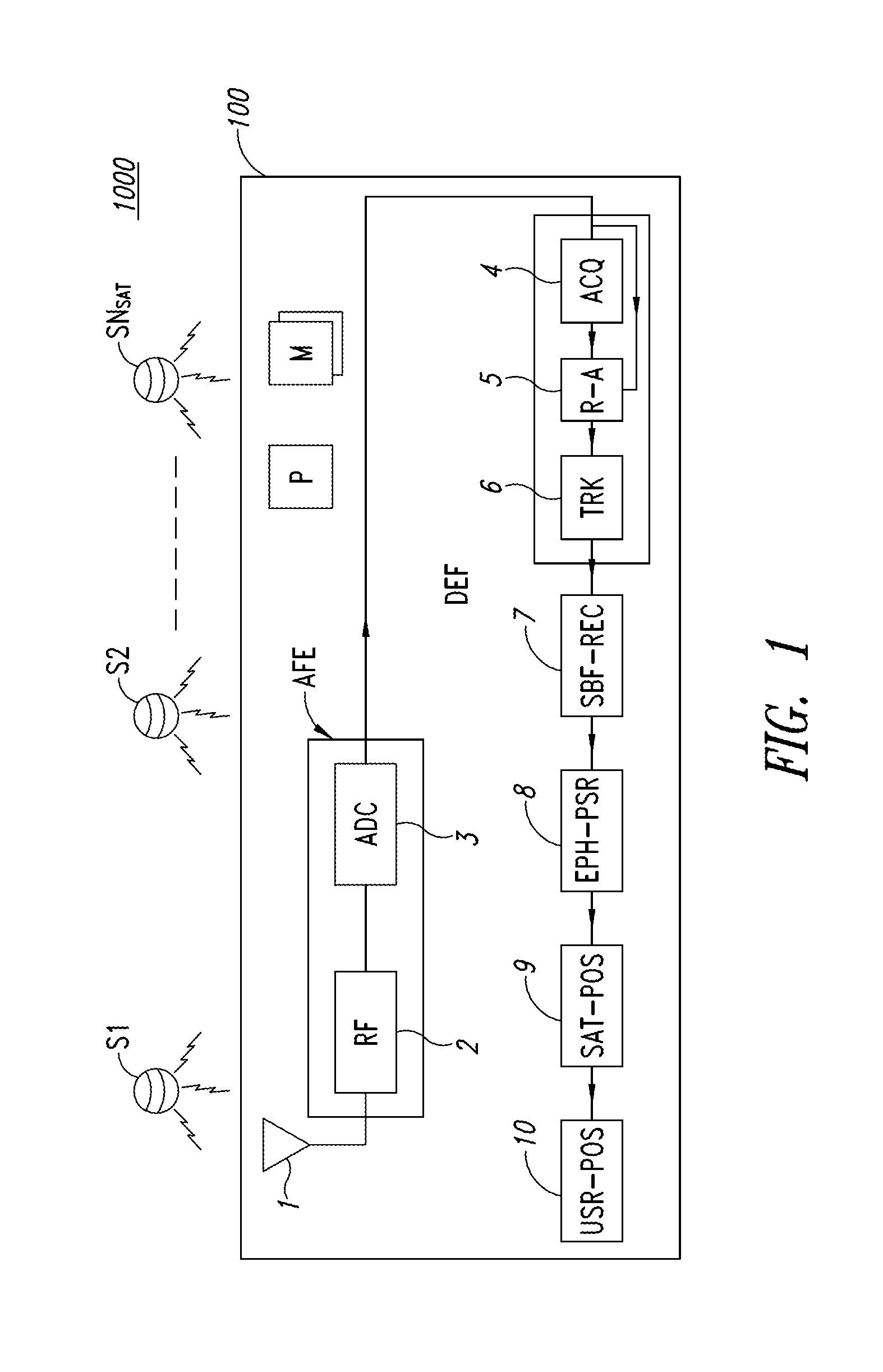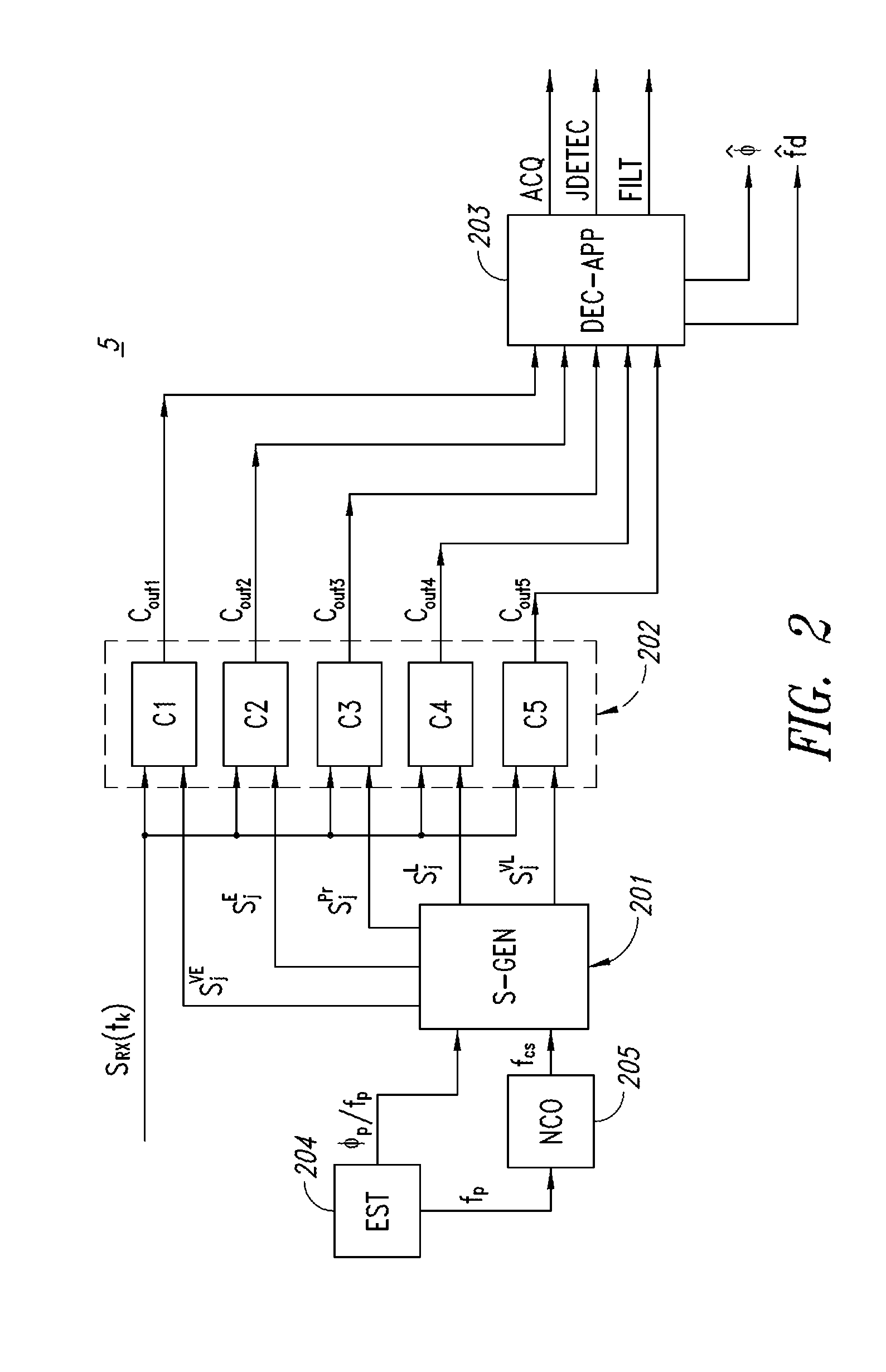Reacquisition method of a CDMA modulated satellite signals and receiving apparatus implementing the method
- Summary
- Abstract
- Description
- Claims
- Application Information
AI Technical Summary
Benefits of technology
Problems solved by technology
Method used
Image
Examples
Embodiment Construction
[0029]FIG. 1 schematically shows a system GNSS 1000 (Global Navigation Satellite System) suitable for use in, for example, the Global Positioning System (GPS), the Global'naya Navigatsionnaya Sputnikovaya System (GLONASS), the Galileo System, or other types of satellite-based positioning systems.
[0030]The global satellite positioning system 1000 comprises a constellation of satellites S1-SNsat and at least one receiving apparatus 100. In a particular implementation, the receiving apparatus 100 comprises an antenna 1, a receiving analog module AFE, provided with a radio frequency stage 2 (RF), and an analog / digital converter 3 (ADC), which may be implemented by hardware modules.
[0031]The receiving apparatus 100 further comprises a digital processing module DFE, comprising an acquisition module 4 (ACQ), a reacquisition module 5, and a tracking module 6 (TRK).
[0032]Moreover, receiving apparatus 100 is provided with a sub-frame recovery module 7 (SBF-REC), an ephemeris processing and ps...
PUM
 Login to View More
Login to View More Abstract
Description
Claims
Application Information
 Login to View More
Login to View More - R&D
- Intellectual Property
- Life Sciences
- Materials
- Tech Scout
- Unparalleled Data Quality
- Higher Quality Content
- 60% Fewer Hallucinations
Browse by: Latest US Patents, China's latest patents, Technical Efficacy Thesaurus, Application Domain, Technology Topic, Popular Technical Reports.
© 2025 PatSnap. All rights reserved.Legal|Privacy policy|Modern Slavery Act Transparency Statement|Sitemap|About US| Contact US: help@patsnap.com



